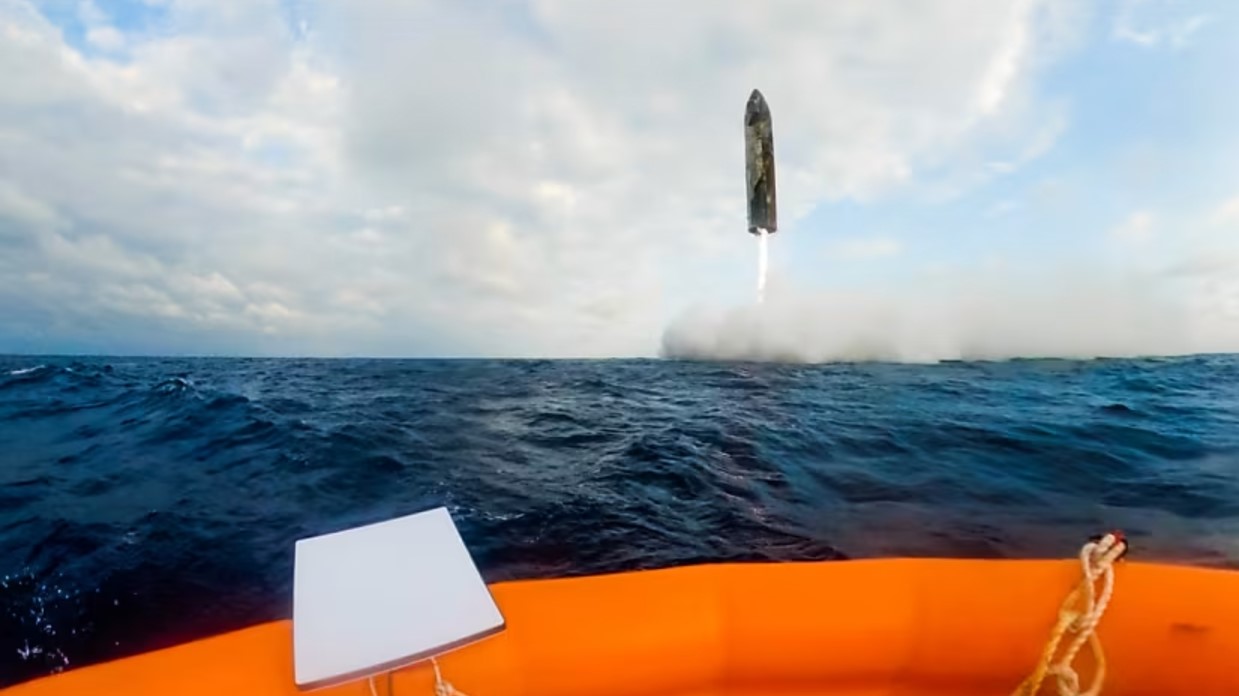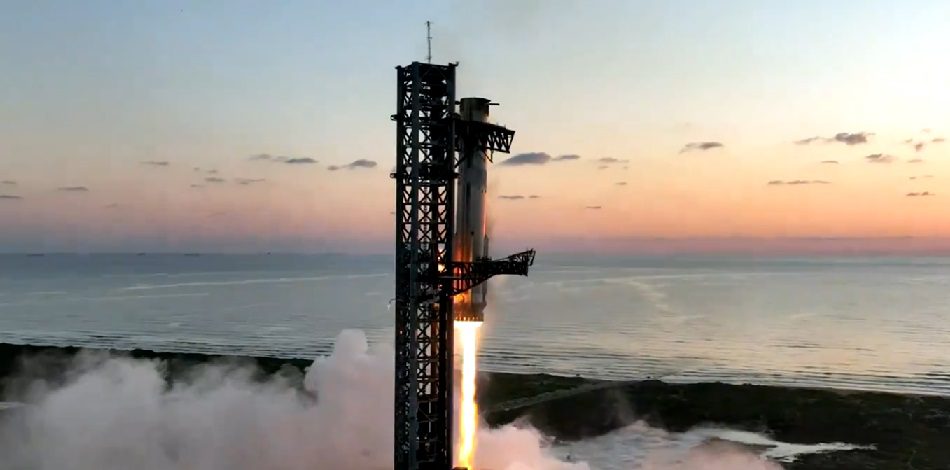The next flight of the SpaceX Falcon 9v1.1 which is tentatively set to launch the Dragon CRS-5 cargo craft by the end of December 2014 may use a fully reusable first stage – bringing it up to the Falcon 9R standard. During some previous Falcon 9 launches, first stages have refired their engines to slow themselves in landing approaches but were then left to fall into the sea. This time it is planned that the first stage attempt to fully land on a floating landing pad.
It is not certain whether whether an landing attempt will be made however. There is currently a legal tussle between SpaceX and Blue Origin over whether this breaches a patent filed by Blue Origin describing a similar landing plan.
SpaceX leader and Chief Technology Officer, Elon Musk, used his Twitter feed to, at least, show off the technology that should allow ocean landings down range. According to Musk, the first stage will now have “grid paddle” control fins which are stowed on ascent and then deploy on re-entry for “x-wing” style control. Each fin moves independently for pitch/yaw/roll.
Such paddle fins have been used before on launch vehicles – most notably on the first stage of the unsuccessful N-1 Soviet moon rocket.
The SpaceX Ocean landing pad, dubbed an “Autonomous Spaceport Drone Ship” by Musk, is a simple large ship borne pad using “oil rig” thruster technology to maintain position to within 3m.






